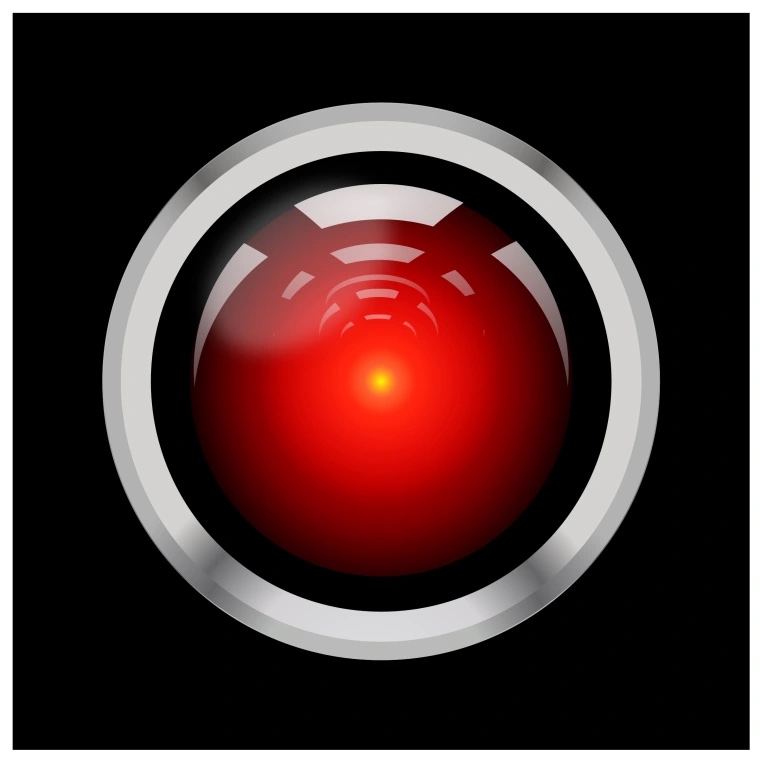As a visionary, Kubrick brings out unbridled, often dystopian, fictions of society onto the cinematic screen, as exemplified by A Clockwork Orange (1971) and Eyes Wide Shut (1999). As a pragmatist, he obsesses over the details of his films down to seconds and pixels, frequently at the sacrifice of his colleagues. Guided by his passionate yet detached observation of humanity, his unrelenting endeavors of digging and exploring its nature fruition into some of the most highly regarded texts in film history.
Kubrick’s signature becomes especially evident when we juxtapose his 1968 film 2001: A Space Odyssey with A.I. Artificial Intelligence (2001) directed by Steven Spielberg. While Kubrick conceptually developed both of these films, A.I. was eventually directed by Spielberg after Kubrick’s death. By comparing and contrasting these similar yet unique films, it becomes apparent on which points the two directors agree or diverge.
Film Form
One of the clearest distinctions lies in the overarching forms of these two films. While A.I. adapts the cinematic language of Hollywood dramas, 2001 resembles the style of Cinéma verité with its inquisitional and documentary style. Within 2001, dialogues, emotions, and character arcs typical of melodrama are minimized in favor of displays, logic, and metanarrative. Moreover, in 2001, forms such as editing (the 4-million-year jump cut), color (the unnatural color of the alien domain), and sound (silence as an indication of death) frequently takes over the functions of narration.
For instance, despite both A.I. and 2001 incorporate jarring sound effects to indicate the uncanny nature of the future, Spielberg implements dissonant music and white noises in the background, while Kubrick made sure the loud, unsettling cacophony that accompanies the monolith aggressively attacks its listeners.
The portrayal of the higher life form is also much more abstract in 2001. On a shared theme of other life forms studying humans, Spielberg depicts a group of meccas in the humanoid form spectating David and Monica through a screen, while the observation of Dave by aliens in 2001 is indirectly suggested by the screen-shaped Monolith.
Content and Monotheism
As mentioned above, A.I. is a character-driven film filled with individuality, while 2001 is a metanarrative about human evolution. Consistent with that, the colors in 2001 are stripped into primary colors exemplified by the yellow and earthy tone of the first act, the menacing red dot of HAL, and the blue landscape of the moon. These vibrant colors, together with the symmetrical shapes and structured classical music, indicate the divinity on which human evolution takes place in this film.
Similarly, in ‘The Dawn of Man’, the barren, Mars-like, desert is chosen over, let’s say, forests. This simplification particularly compliments the monotheistic view of this film. In this article Are the Dessert People Winning? https://www.discovermagazine.com/environment/are-the-desert-people-winning, Professor Robert Sapolsky explains the correlations between barren environment and monotheism.
Takes on AI
The distinct perspectives of Kubrick and Spielberg towards Artificial Intelligence are also apparent when we put David, the child mecca in A.I.,and HAL, the supercomputer in 2001, into comparison. While both films agree with certain natures of AI, Spielberg provides a more extensive answer in A.I.
In both films, the human instructions of AI become causes of disasters. In A.I., the unconditional love from David to Monica predetermines the tragic nature of his being. In 2001, on the other hand, a rather logical instruction to ensure the success of the mission turns HAL against human members of the crew. These debacles indicate the shared neurosis between Spielberg and Kubrick about the potential dangers of AI and the difficulty of containing them.
A crucial difference between David and HAL, however, lies in the nature of their consciousness. While the nature of HAL’s consciousness remains ambiguous in 2001, David demonstrates not only genuine emotions but also self-consciousness and ego. The sentient nature of David is definitively proved by his attempt at suicide, as only genuine pain against one’s own existence would lead to the choice of self-destruction.

Leave a Reply